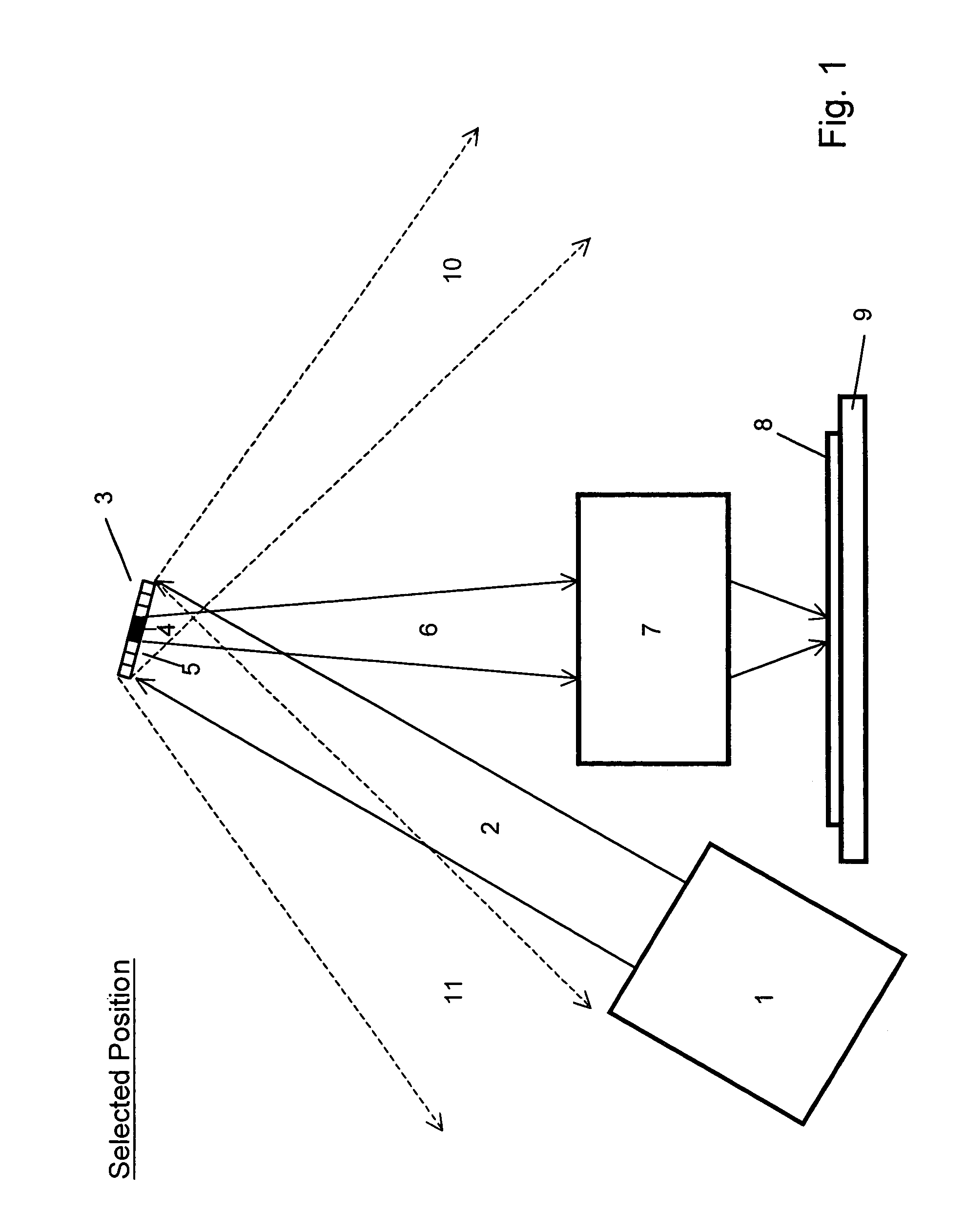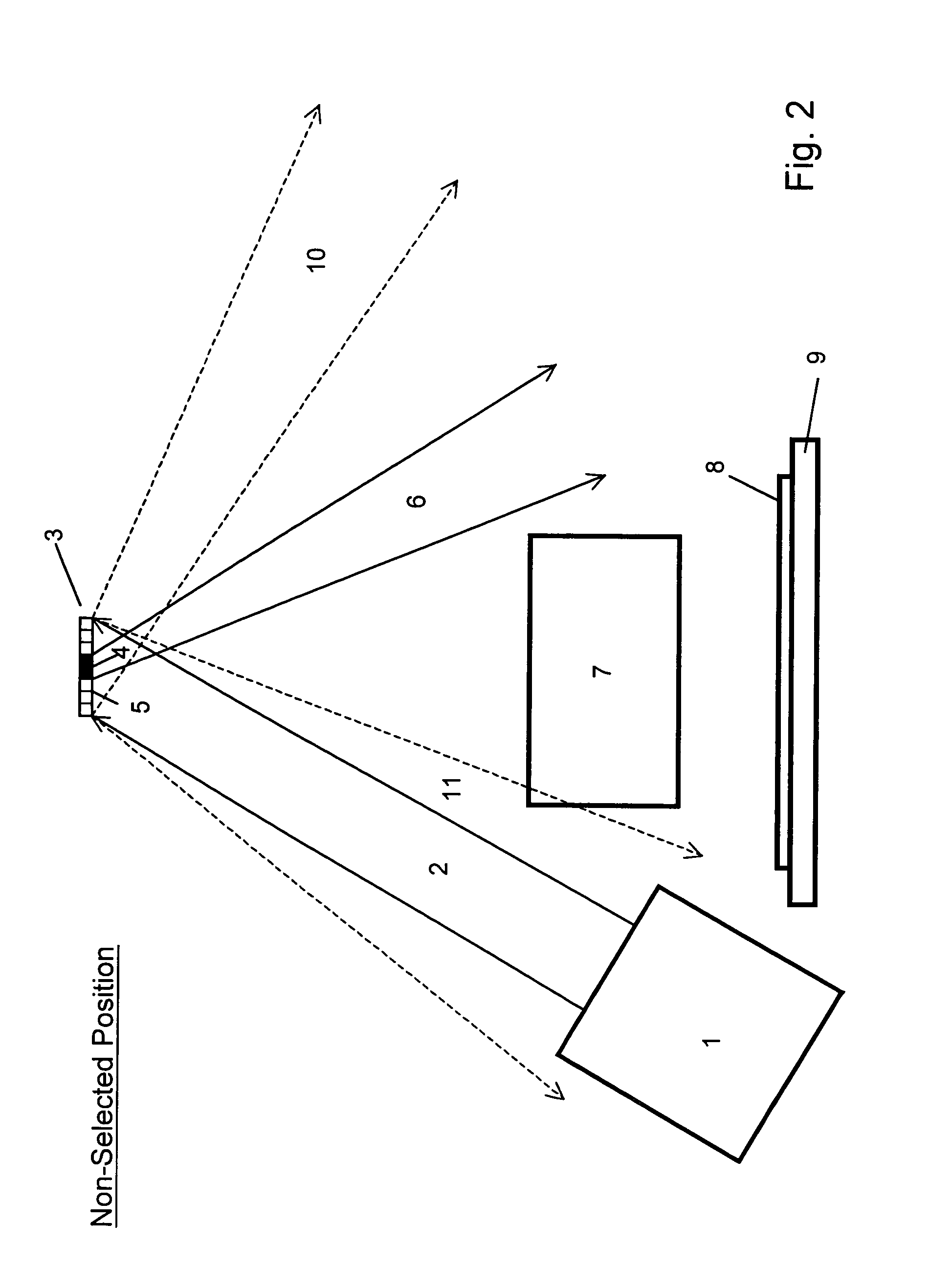Spatial light modulator array with heat minimization and image enhancement features
a spatial light modulator and image enhancement technology, applied in the field of heat-minimizing spatial light modulators with image enhancement features, can solve the problems of extremely long development time for prototyping any kind of electronic circuit, increased mask cost for integrated circuit fabrication, and inability to meet the needs of the user, so as to achieve the effect of eliminating the source and higher resolution
- Summary
- Abstract
- Description
- Claims
- Application Information
AI Technical Summary
Benefits of technology
Problems solved by technology
Method used
Image
Examples
Embodiment Construction
[0028]General Considerations
[0029]Spatial light modulator (SLM) arrays are used in maskless lithography and other applications. A variety of SLMs have been employed for use with different wavelengths. The most widely investigated type of SLM comprises a 2-D array of micromirrors fabricated in Si wafers with process technologies similar to those used in IC production. In these SLMs, typically the size of an individual micromirror element (pixel) is approximately 15×15 μm. When used in lithography, the achievable system resolution and throughput depend on the pixel size and number of pixels. It is highly desirable to make the size of each pixel as small as possible and the number of pixels in an SLM array as large as possible. For example, with advanced microelectromechanical systems (MEMS) technologies, it is possible to make an SLM array with a grid size of 4×8 μm, with a total number of micromirrors as large as 108–109.
[0030]By minimizing the size of the pixels, it is possible to p...
PUM
 Login to View More
Login to View More Abstract
Description
Claims
Application Information
 Login to View More
Login to View More - R&D
- Intellectual Property
- Life Sciences
- Materials
- Tech Scout
- Unparalleled Data Quality
- Higher Quality Content
- 60% Fewer Hallucinations
Browse by: Latest US Patents, China's latest patents, Technical Efficacy Thesaurus, Application Domain, Technology Topic, Popular Technical Reports.
© 2025 PatSnap. All rights reserved.Legal|Privacy policy|Modern Slavery Act Transparency Statement|Sitemap|About US| Contact US: help@patsnap.com



